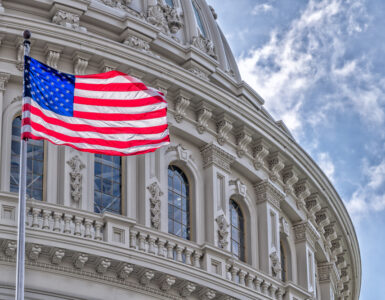This trend has pushed a significant number of families into defaulting on their loans, which can cause them to lose homes and valuable assets. But what does it mean to default on a loan?
Although defaulting generally means failing to cover debt payments, not all financial institutions handle this process the same way. Despite it being a common occurrence, a large number of people don’t know what happens when they default on a loan. In this article, we explore the consequences of defaulting on a loan, and what can be done during the aftermath.
There are several consequences when defaulting on a loan, including reduced credit score and restricted access to financing
When someone defaults on a loan, it means they are no longer able to cover monthly payments. There are two ways to default on a loan. The first is to inform the financial institution that payments will no longer be made. The second is to stop paying without informing lenders.
In general, each financial institution has its own guidelines when it comes to declare a loan in default. Some will contact borrowers after the first missed payment while others wait months before reaching out to them. However, as time passes, lenders will rely on more aggressive tactics to contact borrowers who have missed payments.
Defaulting on a loan has several financial consequences. Financial institutions will contact credit bureaus to report borrowers who have missed payments, causing their credit scores to drop. Most lenders contact bureaus 30 days after the first missed payment, though some give a longer grace period to customers with a clean financial record. Lenders can also take possession of assets when someone defaults. We explain more in the following section.
Lenders can take possession of assets to cover losses when someone defaults on a loan
What happens when someone defaults depends on whether the loan is secured or unsecured. Secured loans require a collateral to be placed in order to get approved. If the borrower defaults, banks keep the collateral. Car loans, mortgages and secured credit cards are some examples of secured loans. If someone defaults on a loan given to purchase a vehicle, lenders can repossess the car and auction it to recoup borrowed money. The same happens with mortgage loans. If a homeowner defaults on a mortgage, lenders can declare foreclosure and sell the property to recover their losses. If the loan has a co-borrower, then they become responsible for payments if the main borrower is unable to do so.
Secured credit cards and small business loans are popular alternatives that required putting up collateral to get approved. If someone defaults on debt from any of those products, lenders seize any collateral and report the incident to credit bureaus, causing a loss of credit score.
Unsecured loans are different, given that borrowers do not put any collateral to receive funding. In such cases, borrowers who are behind on monthly payments may be charged additional fees or face higher interest rates. If banks conclude that borrowers will no longer pay, they can turn the loan over to a collection agency. These agencies are tasked with doing what’s necessary to make borrowers pay. If they fail, the issue can be taken to court, where a judge can order measures like garnishing salaries.
What happens when small business owners default on a SBA loan?
The Small Business Administration (SBA) operates a program where they provide a partial guarantee for loans given to small businesses. In these loans, the SBA acts as a co-signer, increasing lender confidence that at least part of their money is protected against default. SBA loans are not offered by the government agency itself. Instead, they are given by authorized financial institutions that have agreed to meet guidelines set by the SBA.
Small business owners are generally asked to offer up collateral before being approved for an SBA loan. However, sometimes the collateral value may be inferior than what is actually owed. If the small business owner defaults, the Small Business Administration will award lenders a portion of the loan amount, while the rest is usually covered by any existing collateral. Some state laws allow lenders to garnish wages, bank accounts and other properties if needed.
What are the consequences of defaulting on a Merchant Cash Advance or Peer to Peer loan?
People who use Merchant Cash Advance to obtain financing agree to sell lenders a portion of their future revenue. In many cases, lenders are willing to renegotiate terms if it means guaranteeing payments. The advantage of these loans is that they only need to be paid as long as there is revenue. Business owners who close their companies are not legally forced to continue paying because there is no more future revenue.
Peer-to-peer loans were introduced to the market in 2006 with the launch of Prosper and Lending Club, two online lending platforms that quickly gained widespread popularity. Currently, peer-to-peer loans represent a $2 billion industry, with more than 200,000 people benefitting from them. One key aspect of peer-to-peer lending is the fact that borrowers are not legally responsible for any losses if they default. Investors lending money through peer-to-peer platforms such as Lending Club have to take that into account. As a result, most loans offered through this medium have high interest rates.
Is bankruptcy the same as defaulting on a loan?
Some people believe that declaring bankruptcy is the same as defaulting on debt obligations. However, there are some significant differences between the two processes. For once, declaring bankruptcy is a serious step taken to inform creditors that a borrower will not pay back any debt. Bankruptcy stops all collection efforts, telephone calls, garnishment of wages, lawsuits and more. In many cases, declaring bankruptcy also gets rid of many debt types, such as credit cards, medical bills, unsecured loans and more. However, some debt cannot be removed through bankruptcy, such as student loans, tax obligations and child support.
A significant number of families believe that declaring bankruptcy will stop lenders from seizing their homes and vehicles. However, financial institutions can still take possession of any assets and properties offered as collateral, even if borrowers declare bankruptcy. Additionally, defaulting on a loan has a moderate impact on someone’s credit score. If default is temporary, recovering would only take several months of on-time payments.
In contrast, bankruptcy has severe financial consequences. People who have declared bankruptcy are usually denied access to financing, mortgage and auto loans for several years. In some cases, they see their access to the banking system revoked or restricted. Rebuilding financial history after a bankruptcy takes years, and may require the use of credit-building tools such as secured credit cards.
Defaulting on a loan is always a difficult decision. Many families are in a constant financial struggle, trying to make ends meet. In such cases, defaulting might be hard to avoid. However, borrowers must have a proactive attitude and communicate their situation to lenders. Financial institutions are willing to offer more generous terms if it means payments can continue.




